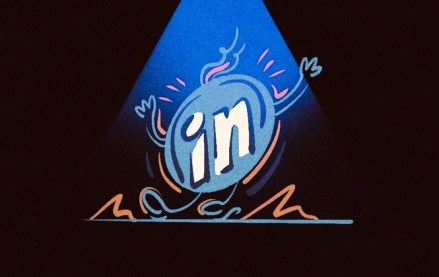Join us Dec. 1-3 in New Orleans for the Digiday Programmatic Marketing Summit
How Amazon’s payout structure for influencers puts a spotlight on creators’ low pay

Amazon’s shopping app, called Inspire, launched in December of last year modeled (at least aesthetically) after TikTok. Now, seemingly, it wants some of TikTok’s audience too.
The app amalgamates content sourced from influencers and brands to pitch products to users. Amazon said two weeks ago that it would pay influencers $25 a video to promote products on that shopping feed — calling into question how much creators deserve to be paid. Amazon declined to comment on this story.
In addition under the new pay structure, the company set a payout limit of $12,500 for influencers who submit a maximum of 500 videos. Amazon said they have a month to do so.
Social media platforms are adopting varying approaches to compensate content creators as the creator economy is growing. On TikTok, creators with over 100K followers receive an even 50/50 revenue split. According to previous Digiday reporting, on Meta, creators participating in in-stream ads and Facebook Reels ads are entitled to a 55% share of the generated revenue. These divergent models reflect the platforms’ strategies in fostering and rewarding content creation across their ecosystems.
This payout model bears little to no resemblance to the TikTok shop arrangement, where creators receive both a complimentary product and commission for crafting videos containing the affiliated link.
Liv Reese, a beauty and fashion influencer who has over 50,000 TikTok followers on TikTok, received an email about Amazon’s new payout structure two weeks ago. Amazon serves as a prominent avenue for generating commission through product recommendation sales for Reese, particularly via their designated storefront.
“As an influencer I’m always trying to diversify my income so I’m not relying solely on brand deals each month,” said Reese. “… I like the idea of Amazon’s new influencer payout scheme if I’m being paid additionally for something I’m already doing anyways.” That said, Reese believes that Amazon has the budget to pay creators more, but choose not to pay content creators what they are worth.
Reese is not alone. Stephani Narvaez, a nano fashion influencer with 1,700 TikTok followers, worked with Amazon in May, earning $2,500 for 20 vertical videos. But Narvaez said she stopped creating content for Amazon after she heard of the new payout structure.
“$25 for a video is disrespectful,” said Narvaez. “Making a video itself is not worth $25, then you have the editing process and then the caption — all of that is time consuming.”
Despite low pay, influencers will likely apply
Amazon has asked creators to submit no more than 35,000 videos for the Inspire content program by Sept. 22. Influencers, however, are still left to wonder whether this deadline will give them enough time to generate meaningful content.
Amazon also stands to take advantage of its captured shopping audience — especially if TikTok’s burgeoning push into e-commerce has ripple effects. Should TikTok put restrictions on external links (as in limit influencers on linking to Amazon products from their TikToks), the ramifications for Amazon could be “profound,” said Windsor Western, co-founder of Her Campus Media.
“Such a move would potentially propel influencers toward seeking alternative revenue sources, posing a notable challenge to Amazon’s current influencer engagement model,” Western said.
There are more influencers than ever before — and many more than brand partnerships alone can sustain. This, coupled with the rise of creator-generated content (for which brands are primarily interested in the content, not the creator’s following), has resulted in the commoditization of those types of content, said Keith Bende, vice president of strategy and marketing at Linqia, an influencer marketing agency.
“The problem is that if influencers are willing to produce and post content for absurdly low fees, the impact will penetrate throughout the entire creator ecosystem,” he said. “It may be worth it for Amazon since ultimately, they want to flood their Inspire offering with as much shoppable content as possible — but it is definitely not worth it for influencers.”
The rate will likely generate low quality, spammy videos, predicted Western, that won’t convince anyone to buy anything.
“The fact that they were asking for up to 500 videos per person shows a disconnect from how much time it actually takes to create content that’s worth consuming. So the big disconnect here for me is when I think about all the work we do when we connect with brands and content that people want to watch takes time, it takes energy, it takes creatives,” she said. “They won’t make Amazon’s Inspire feed at all inspiring.”
More in Marketing

The CMO-CCO split is becoming a corporate fiction
The longstanding divide between marketing and communications is eroding — not with a bang but with a slow, steady merging of responsibilities.

‘Clicks don’t pay the bills, pipeline quality does,’ becomes LinkedIn’s case for its pricey ad prices
LinkedIn’s head of ads measurement, Jae Oh, explains why he believes the platform is “phenomenally cheaper” than others in the market.

Ad Tech Briefing: Digital Omnibus is about to land — here’s what it means for GDPR, and the future of ad targeting
The EC’s Digital Omnibus could redefine data rules — and shift power in digital advertising.








